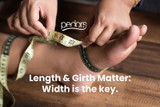The Importance Of Finding The Right Shoes For Seniors
Appropriate footwear is a key component in senior health and wellness, where independence and mobility are key indicators for quality of life and longevity.
If you are a senior care provider we have a Powerpoint Presentation that you may find helpful.
If you are looking for shoes for Mom and Dad or an elderly friend or relative then such a simple thing as being able to find a comfortable shoe that can accommodate a deformity like a bunion for example, can have massive ramifications on overall health. The testimonials on www.pedors.com from family caregivers and seniors alike will give you a clearer idea of who we are and what we do. In a nutshell, we provide affordable, problem solving footwear for seniors with problem feet.
Could it be that such a simple, easy and affordable investment in an appropriate pair of shoes could reap such huge returns in terms of health and wellness?
Finding seniors affordable, comfortable, therapeutic and orthopedic footwear is not always considered when evaluating fall prevention strategies - but it ought to be.Each year 350,000 Americans fall and break a hip. Of those 40% end up in a nursing home and 20% never walk again.
The three primary risk factors for falling are; poor balance, taking four or more prescription medicines and muscle weakness. Elderly people without these risk factors have a 12 % chance of falling in a year, and those with all three have almost a 100 % chance.
Often it’s difficult to discern a potential risk factor. A patient may present themselves as walking well independently, without a walker or a cane, and seemingly spritely. However an examination of their feet may well shed some insight to some prevailing risk factors. These could include swollen feet, unclipped toe nails, calluses, sores in between toes, hammertoes, bunions, heel pain, corns, arthritis – all of which can lead to a compromised gait which in turn affects balance.
As muscles in the legs atrophy with age and become weaker, postural sway becomes more prevalent which in turn affects proprioception and the relative position of one’s own parts of the body and the strength of effort being employed in movement affecting balance and increasing the risk of fall.Common side effects of medication are dizziness. Blood pressure meds may include diuretics where dehydration can also include dizziness.
So what should you look for in geriatric footwear?
i) Comfort. Shoes protect the feet from trauma which can often lead to a prolonged rehab where the ability to walk is affected. Once ambulation is affected muscle strength deteriorates and the risk of fall increases. So probably the most important key consideration is comfort. If the patient’s shoes are not comfortable they won’t wear them, increasing the likelihood of foot injury.
ii) Lightweight and Easy to put on and take off. A big clunky heavy shoe not only affects gait it also tires the patient out – simply put, they won’t wear it, see i) above. Velcro closures with an adjustable strap are often preferred as it makes it easier for patients with limited ability to reach their shoes and can use an extended arm grip if necessary
iii) Delayed heel strike and toe spring. Geriatric footwear should have soling designed to minimize the risk of stumbling and tripping. Often is the case in seniors when gait begins to be compromised ensuring that neither the heel strikes prematurely nor the toe spring grips on surfaces like carpet.
iv) Accommodation. Toe deformities are common, especially in females, and necessitate the need for plenty of depth in the toe box to accommodate overlapping toes and hammer toes. Material components in the forefoot of the shoe that can stretch and mold can provide relief from bunions, overlapping toes, hammertoes, rheumatoid arthritis and hallux valugus.
v) Affordability. Budget is a major factor to consider. By far the majority of seniors are on a fixed budget. Under certain qualifying conditions Medicare covers shoes and inserts for diabetics, but unfortunately there is no coverage for people with lymphedema for example. By keeping the price expectation on par with a pair of sneakers, it helps to rationalize the investment for appropriate footwear.
More on other design features on shoes for swollen feet here
Explore Popular Articles
Tell Your Pedors Story #5 - Carlo and Pedors Lymphedema Shoes
Do you mind sharing in general terms your primary foot issue or issues?Since early 2023, I have suff...
Tell Your Pedors Story #4 - Debbie S
Hi, my husband has swollen feet and legs. He was not able to put his feet into shoes. I spent hours...
Tell Your Pedors Story #3 - Donna J
Tell Your Pedors Story #3 - Donna J - Shoes For Lymphedema and Lipodema After reading Donna's amazin...
Tell Your Pedors Story #2 - Mildred and Penny D
Wedding Shoes For Swollen Feet Penny conversed with me over email after I reached out to her mothe...
For Shoes Length & Girth Matter. Width is the Key.
Helping patients find the footwear they need for swollen feet edema and lymphedema Modern pharmacolo...
Insurance For Orthopedic Shoes - The Shortfalls
Insurance One of the most common inquiries we encounter at our Fantastically Functional Footw...





